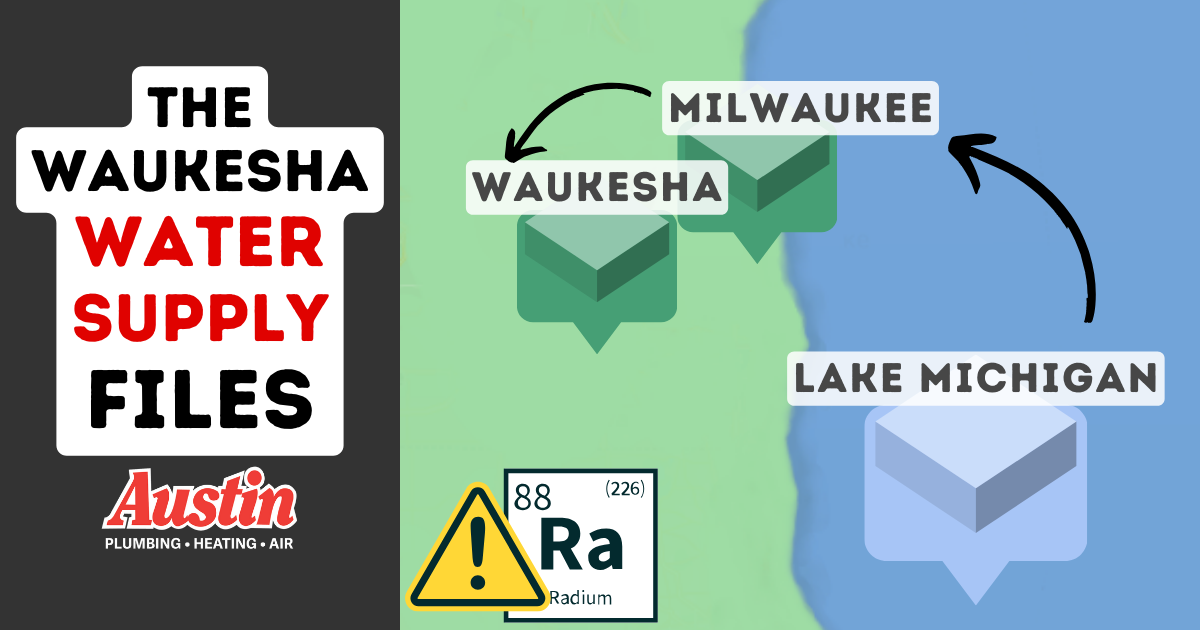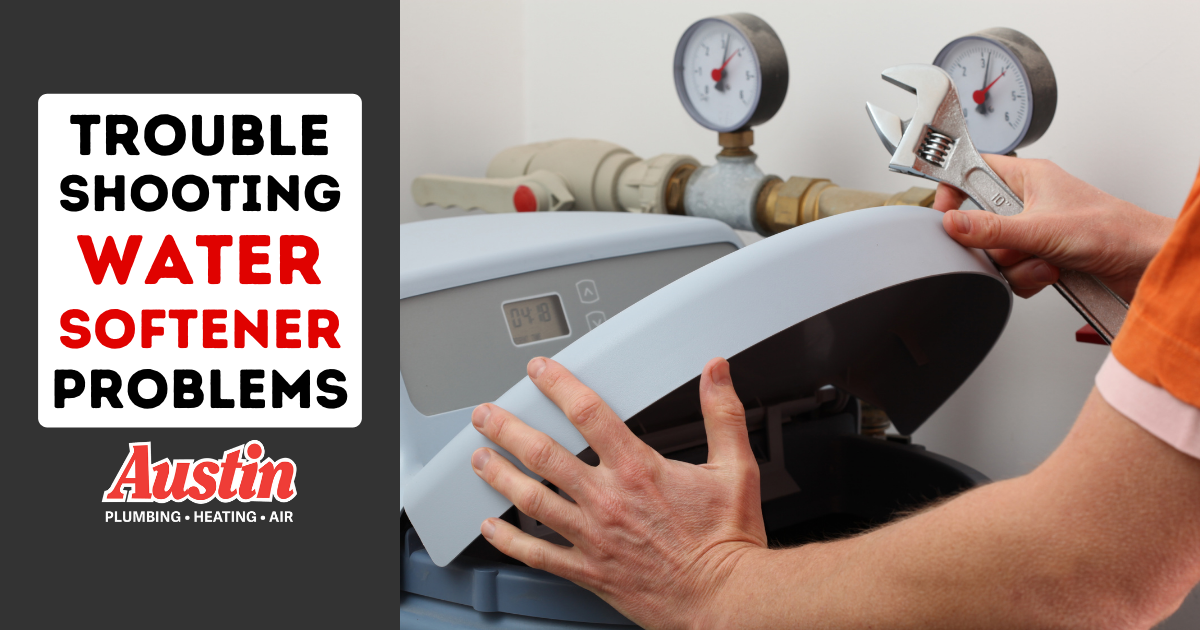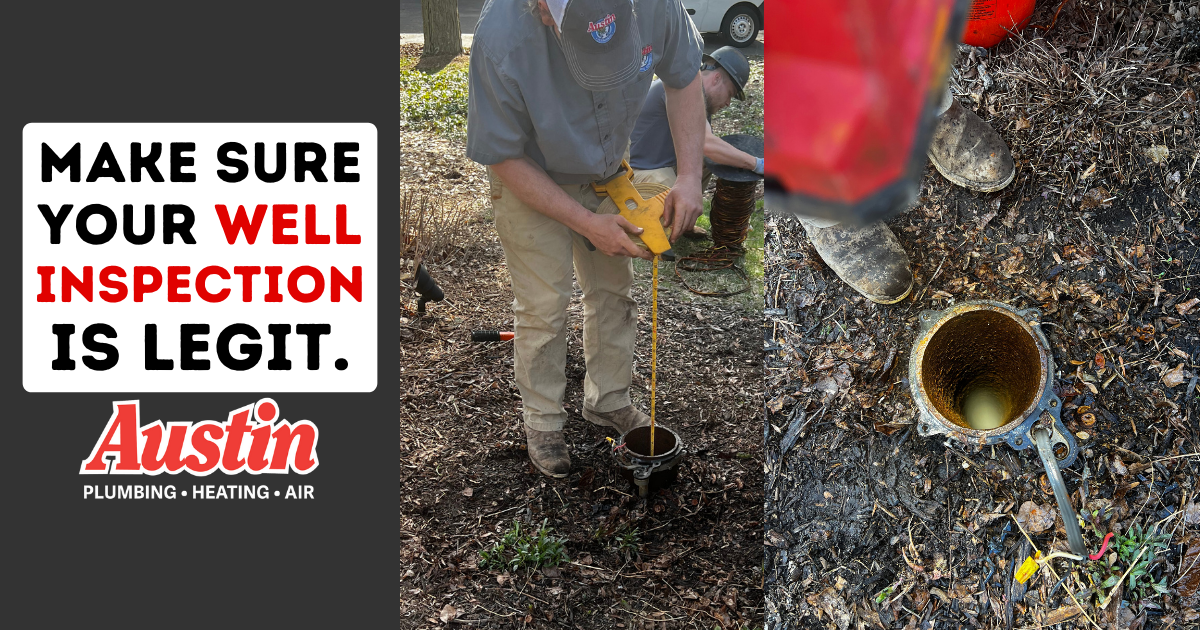Waukesha – Lake Michigan Water Switch: What to Expect & How to Cope

Sage advice from our Master Tradesman for City of Waukesha water customers. Learn strategies to adapt to your new water source and handle the changes coming through the pipeline-all from the perspective of a lifelong professional plumber.
It’s easy to lose track of the news cycle, especially as the monumental task of changing Waukesha’s water infrastructure has been in the news at various stages of development over the last decade. Consider this a friendly reminder that as of October 9th, 2023, Waukesha will finally begin receiving water from Lake Michigan via a new Milwaukee pipeline. Yay!
But that’s not the end of the matter-not really. The devil is in the details, after all…
New Waukesha Water: Need-to-Know Info for Consumers
- Not all water is equal-different sources are treated differently. Keep in mind that since Waukesha’s new water supply requires extra disinfection measures, harsher chemicals are on their way.
- Transitioning from one water source to another may cause other plumbing issues for some Waukesha homeowners, such as aerator clogging and damage to softeners.
- You’ll still need a water softener. Yes, despite lakewater’s relative softness in comparison to groundwater, it’s still considered “very hard” by regulatory standards (and for good reason).
The Most-Asked Question about the New Waukesha Water: Why did Waukesha have to switch to a different water source?
It’s true that Waukesha has relied solely on its own municipal wells for decades. The great thing about these high-capacity, submersible wells is that they produce significantly cleaner water than shallow well types (and if you have a private well, we can prove it). If bacteria were the only concern, there’d be no point in looking elsewhere for good water.
Unfortunately, when it comes to bathing and drinking water, bacteria is far from the only concern.
Swept Under: Excessive radium levels in Waukesha’s aquifers posed widespread, serious health risks
Waukesha’s otherwise-sanitary groundwater supply has long been tainted with the element radium, a heavy metal that is known to cause cancer. In fact, it’s been an open secret since as far back as the early ’90s that radium levels were far beyond acceptable limits laid out by the Environmental Protection Agency.
Suffice it to say that this switch has been a long time coming. But it began with citizens who continually voiced their concerns over many years until they were finally heard-at least in their own state.
Eventually, their concerns would even be validated by the US government, as federal lawmakers introduced new pressure (and funding) to jumpstart Wisconsin’s search for a solution.
New Waukesha Water: Softer, safer, and…dirtier?!
To keep a long story short, all the aforementioned shenanigans finally culminated in 2016 with a truly historic contract made between Waukesha and Milwaukee, whose water supply will now be shared.
Wait a minute-what’s Milwaukee got to do with this?
Milwaukee, via its uber-long eastern border, has direct and constant access to Lake Michigan. That 2016 pact I mentioned earlier? It required an entire pipeline be built to redirect some of Milwaukee’s radium-free lakewater to the thirsty folks in Waukesha-without reducing the supply to Milwaukee itself. Honestly, not a bad idea at all. And for a project of this magnitude, it’s understandable that the construction timeline would span the next several years.
OK-then what’s the problem? Isn’t the new Waukesha water (from Milwaukee) cleaner and safer?
Yes and no. In terms of bacterial contamination, it’s not nearly as clean as Waukesha’s old groundwater. But it’s a heck of a lot easier to treat lakewater for bacteria than it is to treat groundwater for radium.
At the end of the day, this transition will be a net positive for everyone. More importantly, though, Waukeshans are safer, healthier, and overall better off. Waukesha, your water is radium-free at last!
However, we strongly urge consumers to stay aware that the Michigan Lake water purification process follows special guidelines which call for the use of harsher sanitizing agents like bleach and ammonia.
Key Takeaways from the Waukesha-Milwaukee Water Agreement
The Good News about Waukesha’s New Water Source
- GOODBYE, RADIUM: The main reason for the switch. You are no longer plagued by this ultra-hazardous byproduct of industrial manufacturing. Congratulations!
- HELLO, SALT SAVINGS: Lake water is naturally softer than well water, which means you can go ahead and adjust your water softener to use less of it. Look forward to money saved!
The Bad News about Waukesha’s New Water Source
- HEALTH EFFECTS: Lake water hosts a number of living organisms not found in groundwater, so it requires quite the cocktail of chemicals to render it potable (safe to drink). The City of Waukesha has issued warnings related to new treatment methods via the Waukesha Water official website.
- AESTHETIC EFFECTS: This water will taste and smell differently. Also, in regard to bathing, it may cause skin irritation in people with sensitive skin.
- PLUMBING EFFECTS: Over time, more data will become available regarding the true impact of the switch on water flow and pressure for the City of Waukesha. For now, we predict an increase in water pressure, which is generally a positive thing. However, if pressure exceeds 80 PSI, additional plumbing devices may be needed to reduce water pressure below the code-legal max of 80. In this case, the cost would be on the client (you), not the city.
How should you cope with the changes underway?
All municipal water undergoes some form of chemical treatment, and you can’t control what (or how much of it) is introduced at the source-but you can control what enters your home.
For our concerned clients, we suggest the following:
- Install a state-approved chemical reduction filter such as our Water Scrubber™, which basically looks like a water softener, but without the usual drain and media tank. Instead, it utilizes a high-capacity tank fitted with chemical sponges to absorb the disinfection byproducts-so your body doesn’t have to.
This is a whole-home solution that requires virtually no maintenance for up to 2 million gallons. In a typical home, that’s 10+ years of use. The cost of a system like this is right around that of a new high-efficiency water softener(around $2,000), making clean, chemical-free water available at each tap in your home for about $17/month. - Reoptimize your water softener in accordance with the new water supply. Since the water isn’t as hard to begin with, it’s important that you reprogram your system so it isn’t overworking itself.
- Monitor your plumbing system: Changes in water quality, flow and pressure can cause even more issues with your plumbing system. Keep an eye out for leaks, sputtering, or other unusual signs following the change.
Team Austin has served you for 80 years, and we aren’t stopping any time soon.
If you have a question about anything in this guide-no matter what it is-we really are here to help. Already made your decision to shop for a new water softener? Even better! For all water and HVAC issues, get speedy assistance from the best of the best by calling Austin Plumbing, Heating & Air at 262-367-3808.





